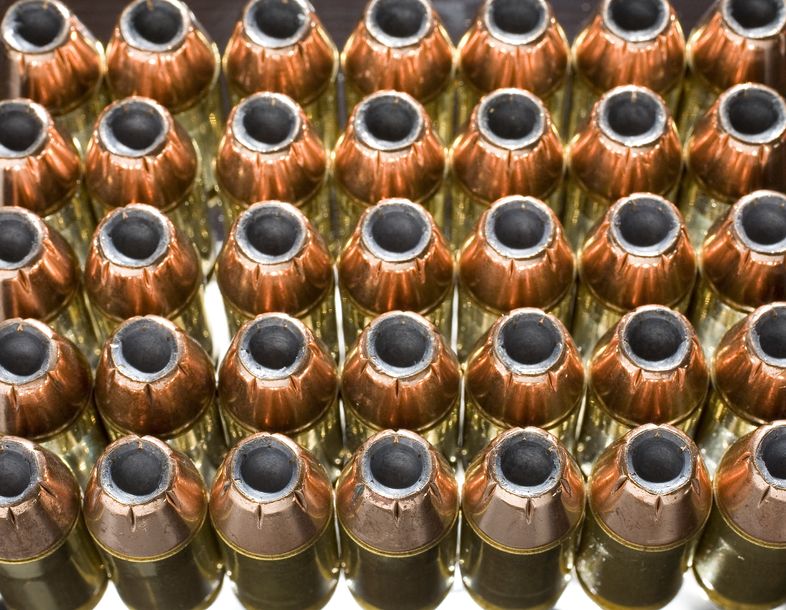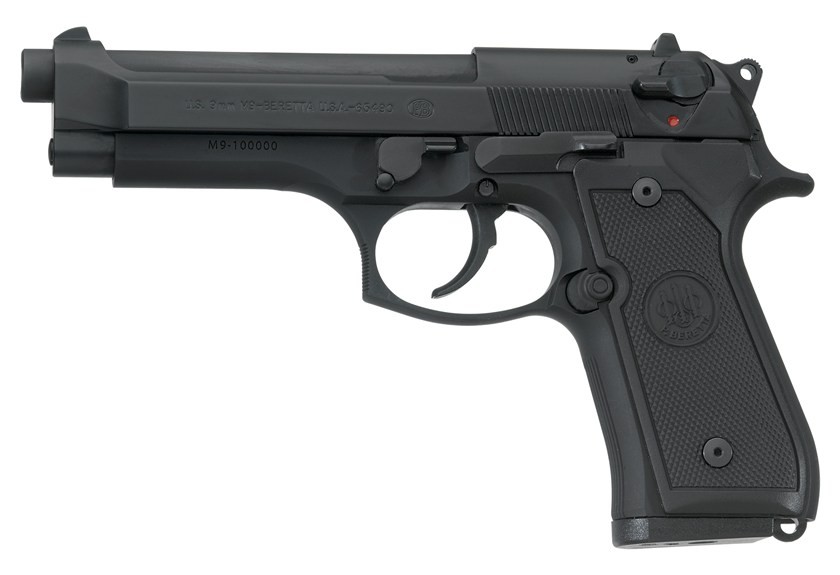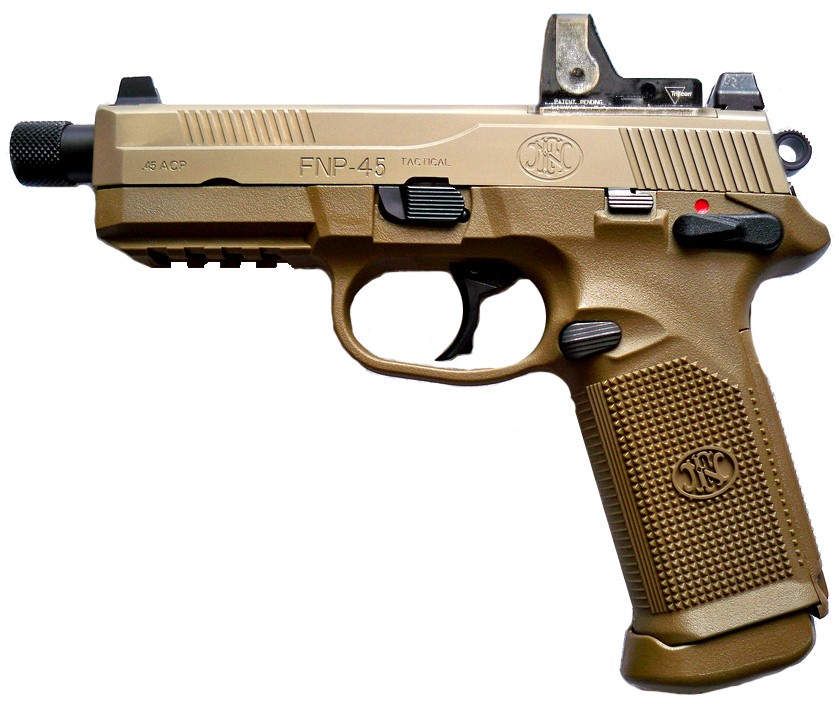Personal Opinion. The US Army and the DOD writ large allowing hollow point ammunition for service use has been a long time coming. The internet rumor that the US could not use JHP because of international law has always been somewhat misleading. Knowing a few JAG lawyers and having some contacts within the old, now cancelled JSP program; it is a little understood fact that Hollow Point ammunition has always been subject to military lawyer interpretation.
So…what does this mean? The DOD asking that the prospective Modular Handgun System submittals to be tested with hollow point ammunition. To my thinking, it makes one thing pretty clear: The DOD is probably going to select a 9mm caliber as the next service pistol.
The folks at the DOD are not living in a bubble. They have heard all the grips about the M9 Beretta, 9mm handguns, and people wishing the old 45 was still in service. And they responded by creating the JSP program which basically had a bias towards 45ACP pistols. But when the rubber met the road and various SME’s were asked for their input, suddenly 45’s weren’t the first choice. And…a certain striker fired pistol was.
This input was so unexpected it was a significant factor in the derailment of the JSP program. So now the DOD is back. Here are my over / under odds on caliber selection:
1. 9mm STRONG contender.
2. .40 S&W but is a long shot.
3. .45 is the distant, distant distant, dark horse. Basically no chance.
Now…since I am giving my opinions on which caliber the DOD will select for the MHS, here are my platform / make considerations. First, the MHS project has stated they are backing away from the external hammer / safety configuration that dominated the JSP and much of the M9 selection. It gets even better, MHS has gone on the record saying striker-fired handguns are preferred.
Second, look at the name of the program. MHS: Modular Handgun System. The modular adjective isn’t there for caliber switching. It’s end user configurable for different sized hands. Right about now, my fellow large handed, mongoloid brethren will swing in with some snarky, unhelpful comments. All the while ignoring the reality that the military as a whole is not made up, tall, 230# muscular men such as myself.
We have an integrated force gender wise. And we have an integrated force stature wise. And a soldier with smaller hands would benefit greatly from a handgun with configurable grip panels. Special mission units can buy whatever they want. So keep that in mind. This is a general service pistol in a military who’s primary small arm is a rifle.
My over / under for handgun Selection:
1. Glock 17. Why? It’s got the track record. Allies use it. There are some in the DOD system and the GEN 4 does offer a somewhat configurable grip. Not great. But a safe choice as far as the brass is concerned.
2. S&W M&P 9. Second choice. US Made. Configurable grip. Will not choose the thumb safety variant.
3. XD 9. US Made. With the grip safety, some senior level commanders might prefer this. Why? Because if a striker Glock is chosen, how many base commanders will require their security forces to walk around in condition zero? Civilian readers balk at it, but our military readers know it’s the truth! Disclosure: I believe condition zero is BS.
4. HK VP9. No chance but my personal favorite. Not enough of a track record. But if the configurable grip is that important, the VP9 is hard to beat. And Heckler & Koch is a vetted US Military Contractor. And again, this is only making the list out of personal bias not because it has earned a spot. It hasn’t.
5. Glock 21 or M&P 45. If by some miracle (or Greek tragedy?) the DOD selects a 45 caliber pistol, it will be one of these. Will not be a 1911. No way. No how.
So there you have it. Enough info to upset pretty much everyone. But I stand by my analysis. 90% it will be a Glock 17. Time will tell.
Marky
www.tacticaltshirts.com
“Shooting Guns & Having Fun”
The Army is considering the use of fragmenting ammunition, such as hollow point bullets, to increase its next-generation handgun’s ability to stop an enemy.
This bit of news was revealed Tuesday, during the service’s fourth industry day for its Modular Handgun System.
After a recent legal review within the Pentagon, the Army can consider adopting “special purpose ammunition,” said Richard Jackson, special assistant to the Army Judge Advocate General for Law of War, according to an Army news release. This marks a departure from battlefield practices over a century old.
Jackson told Army Times that while this isn’t the first approved use of such bullets in the military, the stance represented “a significant re-interpretation of the legal standard” for ammunition. He also said a lot has changed since the initial movements against the round, especially with the increased prevalence of asymmetric warfare.
“There’s a myth that [expanding/fragmenting bullets] are prohibited in international armed conflict, but that doesn’t make any sense now,” Jackson said.
More than 20 manufacturers are vying to make the Army’s next handgun, dubbed the XM-17. The solicitation for the contract is to produce more than 280,000 guns for the Army, and is expected to drop later this month, said Lt. Col. Terry Russell, program manager for individual weapons at Program Executive Office Soldier. First deliveries are currently slated for 2018.
Most of the Army uses full metal jacket, or ball ammunition, in both handguns and rifles. These rounds are designed to hold together, increasing penetration and narrowing the tunnel of damaged tissue.
Expanding and fragmenting bullets can flatten or break apart, and are more likely to remain in the body of a target and transfer all of their energy to it. A wider swath of tissue is typically destroyed.
Modern complaints against the M9 have included stopping power. The potential shift toward hollow point ammunition could allow manufacturers a tool to change the ballistics equation substantially, without a shift away from the 9 mm round. Advantages of a 9 mm round include theoretically larger magazine capacity (because of a smaller bullet) and adherence to the NATO standard, allowing for interoperability of the allied nations’ weapons.
On the battlefield, the U.S. has generally observed the 1899 Hague Convention rule barring expanding and fragmenting rounds, despite the fact that it never has been signatory to that particular agreement, Russell said.
The U.S. reserved the right to use different ammunition where it saw a need. For example, Criminal Investigations Command and military police use hollow points — as do law enforcement agencies around the country — in part to minimize collateral damage of bullets passing through the target. Special Forces also uses expanding/fragmenting rounds in counter-terrorism missions.
“The use of this ammunition supports the international law principles of preventing excessive collateral effects and safeguarding civilian lives,” an Army statement said.
In theory, the Pentagon appears to have legally justified broader use that could include rifle rounds, Russell said, though he also called the standard issue 5.56 mm Enhanced Performance Round (M855A1) “a very good performing round.”
“I don’t know that there would be a necessity to have another round, but I’m not the requirements writer, either,” Russell said.
The competition to replace the long-standing Beretta M9 standard had already been opened to weapons of different calibers, opening the door to .40 and .45 caliber handguns. Russell noted the complexity of the different variables that come into play.
For example a larger round can enhance power through both slight edges in bullet mass and with and capacity for more gun powder. But that can also damage accuracy, with more recoil forcing a shooter to spend more time reacquiring the target.
“It’s about better performance than what we currently have, which includes the shootability,” Russell said. “You can’t just isolate one variable (as more important than the other).”
“We want them to produce the best system that meets the requirement.”
The FBI switched from 9 mm to .40 caliber after a deadly 1986 shootout in Miami in which the shooters managed to keep fighting after being hit. The FBI is in the process of switching back to 9 mm – though the federal law enforcement agency uses hollow point bullets.
The Hague Convention of 1899 included a declaration banning bullets that “expand or flatten easily in the human body.” The premise of the convention – designed well before World War I – was that the bullets caused unnecessary and therefore inhumane injury unrelated to stopping a combatant from continuing to fight. The U.S. did not to sign onto that rule.
The British – its most fierce opponent in 1899 because of its use of flattening “dum-dum” bullets, most frequently on the frontier of British India – later signed on in the Hague Convention of 1907.
- EP-345: Did KeyMod Save President Trump? - July 18, 2024
- EP-344: The Commies Get Their Wish…Kinda - July 15, 2024
- EP-343: Donald Trump Shot - July 14, 2024








